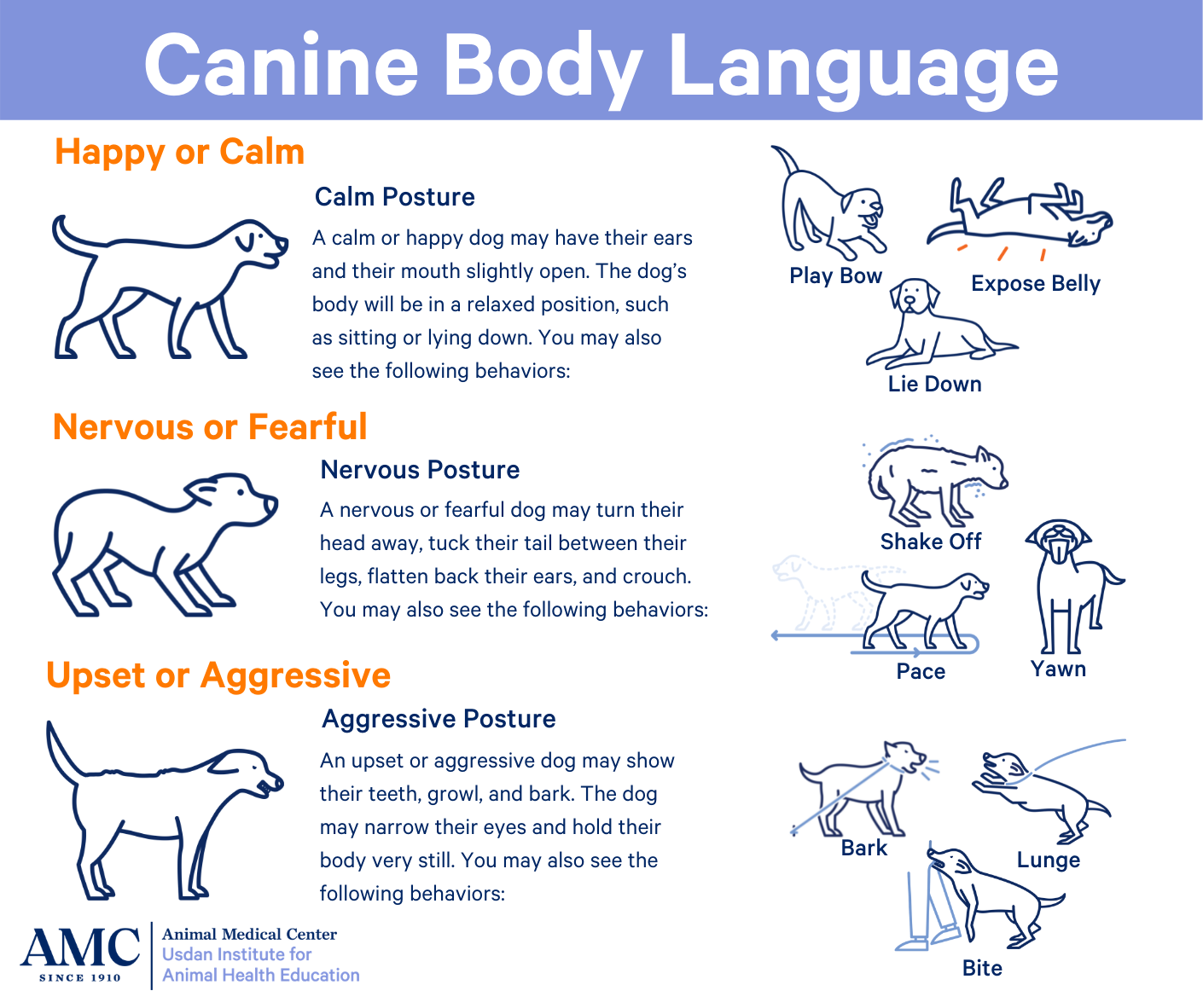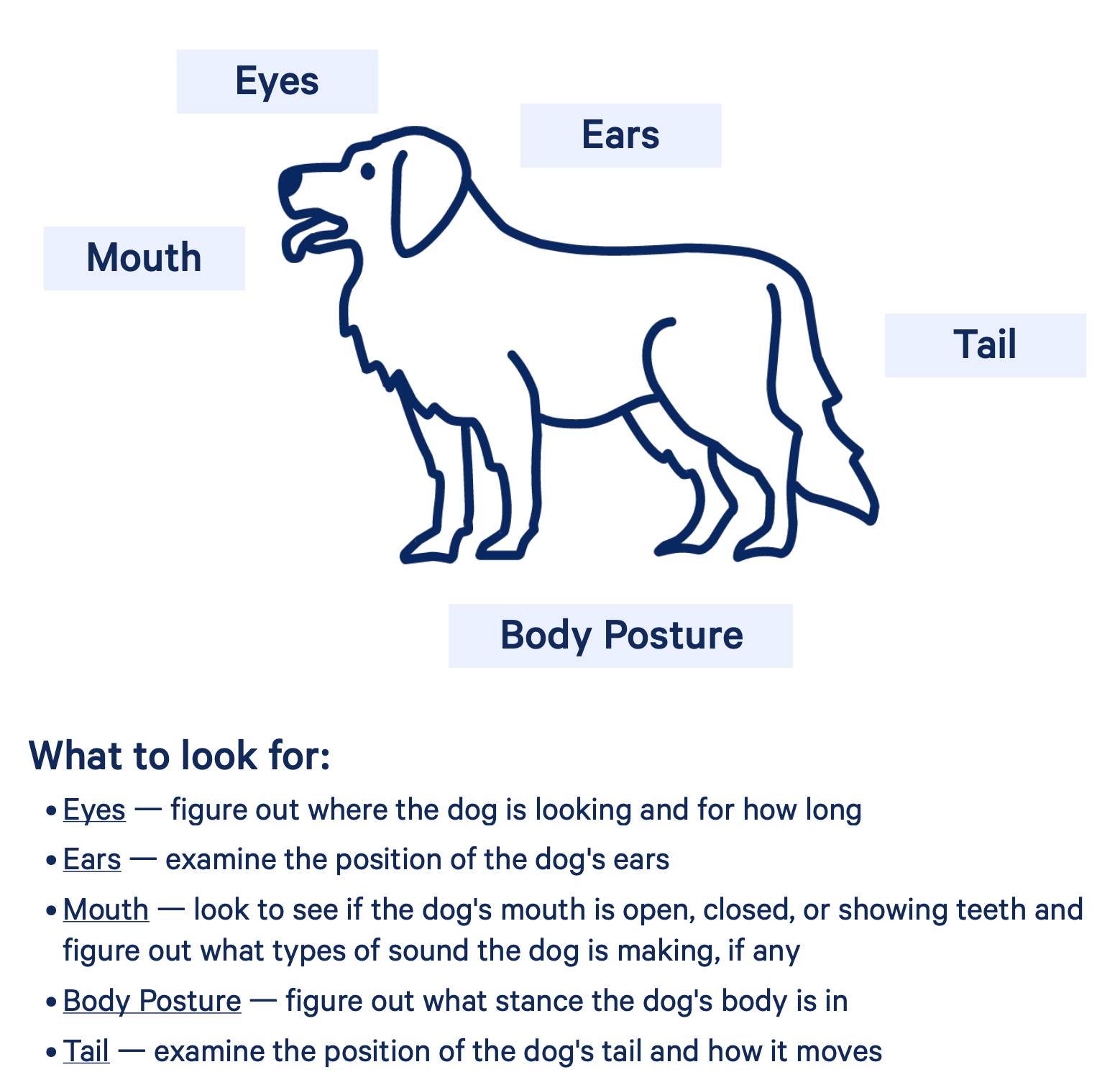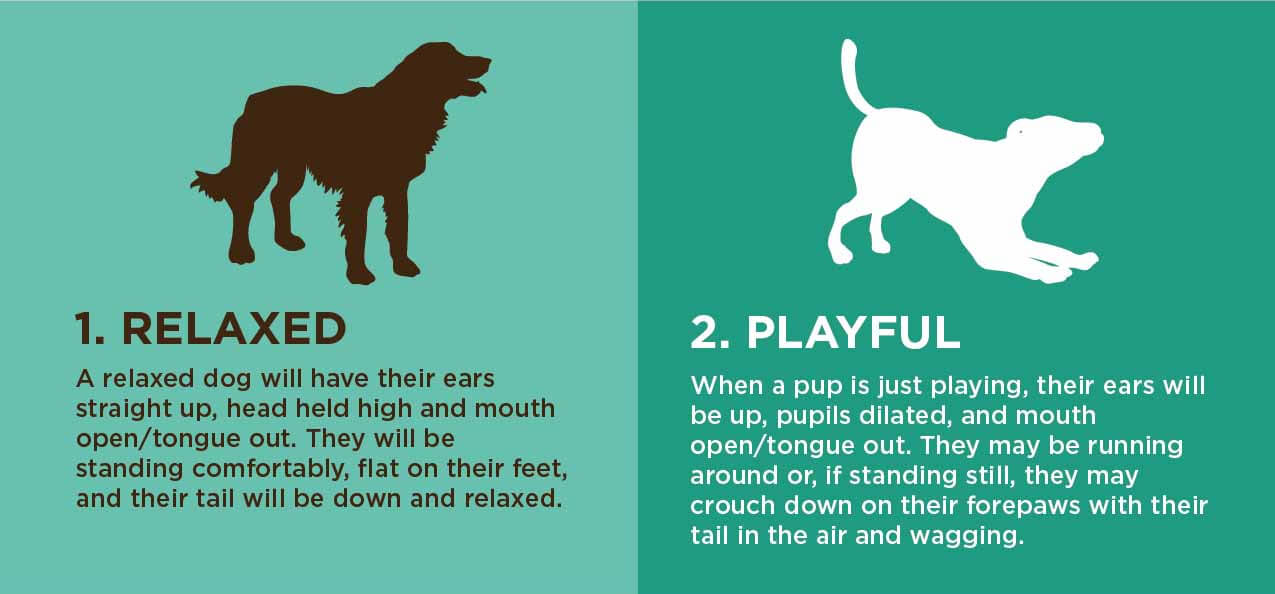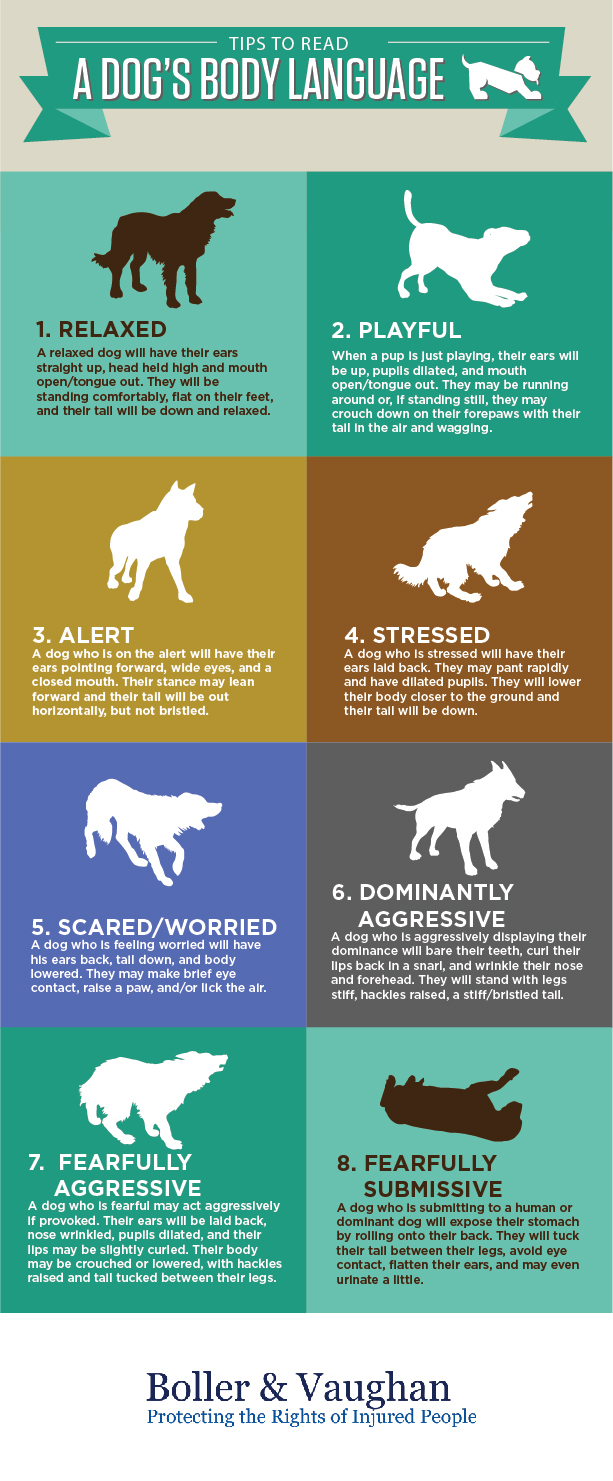Dogs Body Language Explained

Dogs Body Language Explained Housepetscare Dog body language can be confusing. but if you know the signs and signals to look for, it can make it easier to communicate with and understand your pet. When reading a dog’s body language, it’s important to note that the dog’s entire body plays a role in signaling; for example, a wagging tail doesn’t necessarily mean that a dog is happy or relaxed, especially if the rest of their body is stiff.

Dogs Body Language Ino Pets Parents Network Our dog body language chart breaks down common postures, facial expressions, and tail positions—so you can read your pup's feelings at a glance! with pictures and easy explanations, it's perfect for every dog owner. Communication between humans and dogs goes way beyond barks. your dog’s body postures tell their own unique story. decoding them is like learning a secret language. something as simple as the position of your dog’s ears or head can tell you if your pup is feeling excited, scared, or stressed. What's your dog trying to tell you? find out if they're happy, worried or aggressive with our easy to follow illustrations of dogs' body language. Decode your dogs body language with this complete guide. learn about their signals, postures, and expressions to strengthen your bond and communication.

Dogs Body Language Ino Pets Parents Network What's your dog trying to tell you? find out if they're happy, worried or aggressive with our easy to follow illustrations of dogs' body language. Decode your dogs body language with this complete guide. learn about their signals, postures, and expressions to strengthen your bond and communication. Play bow an easy to read aspect of dog body language is the play bow. this is when dogs place their chest on the ground with their butt in the air.this playful gesture is a clear sign that. How to read your dog’s body language is one of the most important skills you can develop as a dog owner. dogs primarily communicate through body postures, facial expressions, and vocalisations. learning to interpret these signals will help you build a stronger bond, prevent behavioural problems, and keep your dog safe and comfortable. Understanding dog behaviour and body language is crucial to building a strong bond with your furry friend. dogs communicate primarily through body language, which can be divided into three main categories: relaxation, alertness, and aggression. We explore eight of the most common signals dogs can give off and how to spot them. dogs communicate with one another through body language and movement of their eyes, ears, tails, and mouths.

How To Read A Dog S Body Language Hauptman O Brien Wolf Lathrop Play bow an easy to read aspect of dog body language is the play bow. this is when dogs place their chest on the ground with their butt in the air.this playful gesture is a clear sign that. How to read your dog’s body language is one of the most important skills you can develop as a dog owner. dogs primarily communicate through body postures, facial expressions, and vocalisations. learning to interpret these signals will help you build a stronger bond, prevent behavioural problems, and keep your dog safe and comfortable. Understanding dog behaviour and body language is crucial to building a strong bond with your furry friend. dogs communicate primarily through body language, which can be divided into three main categories: relaxation, alertness, and aggression. We explore eight of the most common signals dogs can give off and how to spot them. dogs communicate with one another through body language and movement of their eyes, ears, tails, and mouths.

Tips For Understanding A Dog S Body Language Understanding dog behaviour and body language is crucial to building a strong bond with your furry friend. dogs communicate primarily through body language, which can be divided into three main categories: relaxation, alertness, and aggression. We explore eight of the most common signals dogs can give off and how to spot them. dogs communicate with one another through body language and movement of their eyes, ears, tails, and mouths.
Comments are closed.